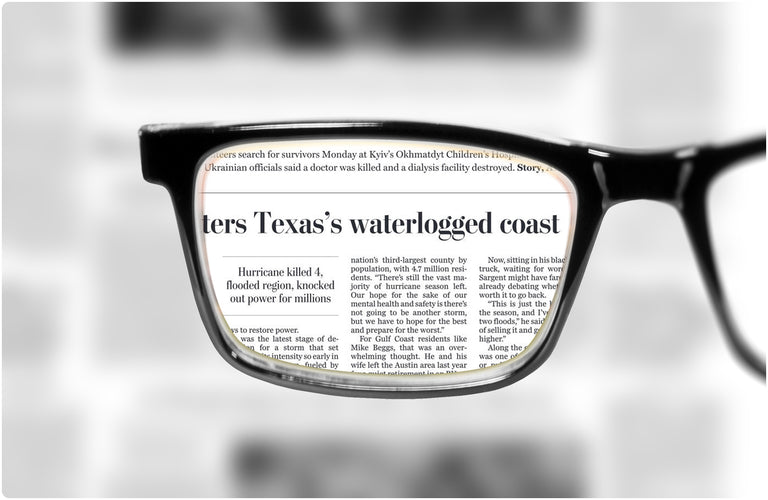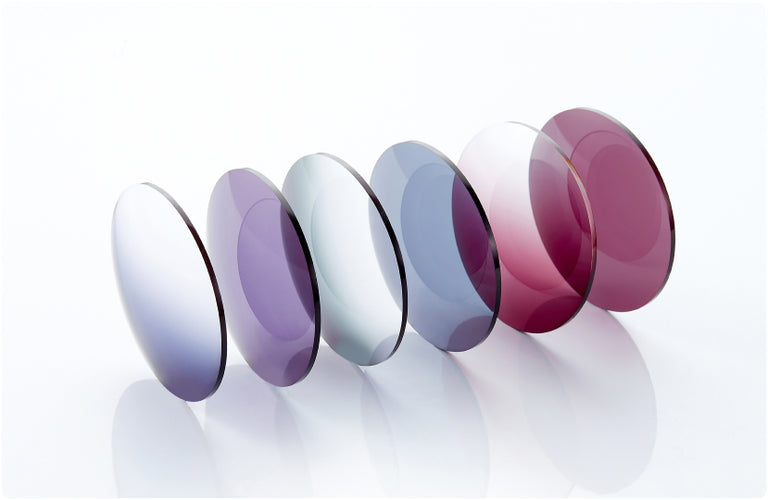Lens Options
Choose the Right Lens to
Meet Your Vision Needs

Progressive readers

Progressive readers
blue light protection

Progressive readers
sunglasses

Bifocal reading sunglasses

Single Vision with blue light options available

Blue light no magnification

Photochromic

Mirror lens

Night driving lens

Polarized sunglass lens

regular sunglasses



Progressive lenses smoothly transition between different optical powers for distance, intermediate, and near vision correction.
- Progressive lenses blend powers seamlessly for clear vision at all distances without lines, ensuring a natural and comfortable viewing experience.
- Progressive lenses feature multiple optical zones: upper for distance vision, middle for intermediate tasks like computer work, and lower for reading.
- With progressive lenses, wearers do not need to switch between multiple pairs of glasses for different tasks.
- Adaptation to progressive lenses may take time due to their design, especially when adjusting to transitions between different optical powers.
Progressive lenses provide a versatile and convenient solution to enjoy clear vision at all distances without the need for multiple pairs of glasses.
Blue light progressive lenses combine two key features: progressive lenses and blue light filtering technology.
- Progressive Reader Lenses offer a smooth transition of power across the lens, enabling clear vision at various distances without requiring separate reading glasses. The upper part may be non-powered or have a weaker strength compared to the lower part, which provides intermediate and close-up vision support.
- Blue Light Filtering Technology: This tech, in the lens or as a coating, cuts down high-energy blue light from screens and lights. It reduces eye strain, fatigue, and potential harm linked to extended blue light exposure, like sleep issues and digital eye strain.
Progressive lenses with blue light filtering correct presbyopia and protect against digital eye strain for clear vision and comfort in the digital age.


A photochromic lens is an eyeglass lens that automatically darkens when exposed to ultraviolet (UV) light and lightens when UV light is reduced or absent. These lenses are often referred to as "transition lenses" or "light-adaptive lenses."
- Convenience: They eliminate the need to switch between regular glasses and sunglasses when transitioning between indoor and outdoor environments.
- UV Protection: In their darkened state, photochromic lenses block a significant amount of harmful UV radiation, helping to protect the eyes from potential damage.
- Comfort: By reducing glare and adjusting to changing light conditions, photochromic lenses can enhance visual comfort for the wearer.
Photochromic lenses darken and lighten, usually taking a few minutes, affected by factors like temperature and UV light intensity. They may not darken much inside cars due to UV-blocking windows.


Acrylic lenses are made from polymethyl methacrylate (PMMA), commonly known as acrylic or acrylic glass. Acrylic is a transparent thermoplastic material that is lightweight, durable, and offers excellent optical clarity.
Here are some key characteristics of acrylic lens material:
- Lightweight: Acrylic lenses are lighter than glass lenses, making them more comfortable to wear, especially for individuals with higher prescriptions.
- High Optical Clarity: Acrylic lenses provide excellent optical clarity, allowing for sharp and distortion-free vision.
- Impact Resistance: Acrylic is more impact-resistant than glass, making acrylic lenses less likely to shatter or break upon impact.
- Scratch Resistance: While acrylic lenses are not as scratch-resistant as some other lens materials like polycarbonate, they can still be treated with scratch-resistant coatings to improve durability.
Polycarbonate lenses, a strong thermoplastic polymer, are highly durable and clear, commonly used in eyeglasses, safety goggles, sports eyewear, and camera lenses.
Here are some key characteristics of polycarbonate lens material:
- High Impact Resistance: Polycarbonate is highly durable and can endure substantial impact without shattering, making it ideal for safety glasses and sports eyewear.
- Lightweight: Despite its strength, polycarbonate is lightweight, making it comfortable to wear for extended periods, particularly in eyeglasses.
- Polycarbonate lenses offer excellent optical clarity for sharp, distortion-free vision.
- UV Protection: Polycarbonate lenses block 100% of UV rays without extra coatings, shielding the eyes from UV damage.
- Scratch Resistance: Polycarbonate lenses handle daily wear well but can be enhanced with scratch-resistant coatings for extra durability.
Polycarbonate lenses combine strength, safety, and optical clarity, making them ideal for eyewear requiring durability and impact resistance.


A blue light lens feature refers to a type of coating or filter applied to eyeglass lenses to help reduce the amount of blue light exposure from digital screens, LED lighting, and other sources.
Blue light is a high-energy visible (HEV) light that is emitted by various electronic devices, such as smartphones, computers, tablets, and LED televisions. Prolonged exposure to blue light, especially during evening hours, has been associated with eye strain, fatigue, disrupted sleep patterns, and potential long-term effects on eye health.
Blue light lenses feature a special coating that selectively blocks or filters out a portion of the blue light wavelengths, reducing the amount of blue light that reaches the eyes. By doing so, these lenses aim to alleviate eye strain, improve visual comfort, and potentially mitigate some of the negative effects associated with prolonged screen time.
UVA/UVB protection in an eyeglass lens refers to the ability of the treated lens coating to block or absorb ultraviolet (UV) radiation from the sun. UV radiation is a type of electromagnetic radiation emitted by the sun, consisting of different wavelengths, including UVA and UVB.
- UVA (ultraviolet A) and UVB (ultraviolet B) rays can both potentially cause harm to the eyes and surrounding skin if they are not adequately protected against.
- Prolonged exposure to UV radiation can contribute to various eye conditions, including cataracts, macular degeneration, and photokeratitis (sunburn of the cornea). It can also lead to premature aging of the skin around the eyes and increase the risk of skin cancer.
Even on cloudy days, UV radiation can penetrate through the clouds and reach the eyes, so wearing eyeglass lenses with UVA/UVB protection is recommended year-round, regardless of weather conditions.


AR coating, short for anti-reflective coating, is a thin layer on eyeglass lenses that reduces reflections and glare. It enhances visual clarity, reduces eye strain from glare like artificial lighting and screens, and improves the appearance of the lenses.
Here are some key features and benefits of AR coating on eyeglass lenses:
- AR coating reduces reflections on lenses, minimizing glare and allowing more light to pass through to the eyes, which is especially helpful in bright environments or when using digital screens.
- Enhanced Vision: AR coating boosts contrast and sharpness by reducing reflections, improving clarity for tasks like reading, night driving, and using digital devices.
- Enhanced Appearance: AR coating makes the lenses less noticeable, giving them a more transparent and cosmetically appealing appearance.
- Better Eye Comfort: With less glare and reflections, AR-coated lenses can help reduce eye strain and fatigue, especially during prolonged periods of reading or computer use.
- Easier Maintenance: AR coating makes lenses easier to clean, as it reduces the tendency for dust, smudges, and fingerprints to adhere to the surface of the lenses.
Polarized lenses reduce glare and enhance clarity outdoors by filtering horizontally oriented light waves from surfaces like water, snow, and roads.
Here are some key features and benefits of polarized lenses:
- Glare Reduction: Polarized lenses reduce reflected sunlight glare, enhancing comfort and safety during outdoor activities like driving, fishing, skiing, or boating.
- Enhanced Visual Clarity: Polarized lenses cut glare, improving contrast and clarity for better visual perception, especially in bright or harsh lighting.
- UV Protection: Many polarized lenses also offer built-in UV protection to shield the eyes from harmful ultraviolet (UV) radiation from the sun. This helps reduce the risk of eye damage and provides long-term eye health benefits.
- Reduced Eye Strain: With less glare and improved visual clarity, polarized lenses can help reduce eye strain and fatigue, even during extended periods of outdoor activity.
- Color Enhancement: Some polarized lenses are designed to enhance color perception and saturation, making colors appear more vivid and true-to-life.


Mirrored lenses are eyeglass lenses that have a reflective coating applied to their surface. This coating creates a mirror-like effect, giving the lenses a shiny, metallic appearance when viewed from the outside.
Here are some key features and benefits of mirrored lenses:
- Glare Reduction: Mirrored lenses reflect incoming light, reducing glare and enhancing visibility, ideal for outdoor activities like skiing, snowboarding, and driving.
- Privacy: Mirrored lenses can provide some level of privacy by obscuring the wearer's eyes from view. This can be useful in situations where individuals prefer not to make eye contact or have their eyes visible to others.
- Fashion Statement: Mirrored lenses are often chosen for their stylish appearance and bold aesthetic.
- UV Protection: Mirrored lenses often include UV protection, shielding the eyes from harmful UV radiation, promoting eye health and reducing the risk of damage.
- Temperature Regulation: The reflective coating on mirrored lenses can help to reduce heat absorption, keeping the lenses and the area around the eyes cooler in hot weather.
Night driving lenses enhance clarity and reduce glare during nighttime or low-light driving, addressing challenges like reduced visibility and headlight glare.
Here are some key features and benefits of night driving lenses:
- Anti-glare Coating: Night driving lenses include a coating to reduce glare from headlights and streetlights, enhancing visibility and driving comfort at night.
- Night driving lenses feature an anti-glare coating to enhance visibility and driving comfort in low-light conditions.
- Night driving lenses reduce halos, starbursts, and other visual artifacts around bright lights, improving night-time driving visibility.
- UV Protection: Some night driving lenses also offer built-in UV protection to help shield the eyes from harmful ultraviolet (UV) radiation from the sun, providing long-term eye health benefits.
- Scratch Resistance: Night driving lenses may be treated with scratch-resistant coatings to improve durability and maintain visual clarity over time.

